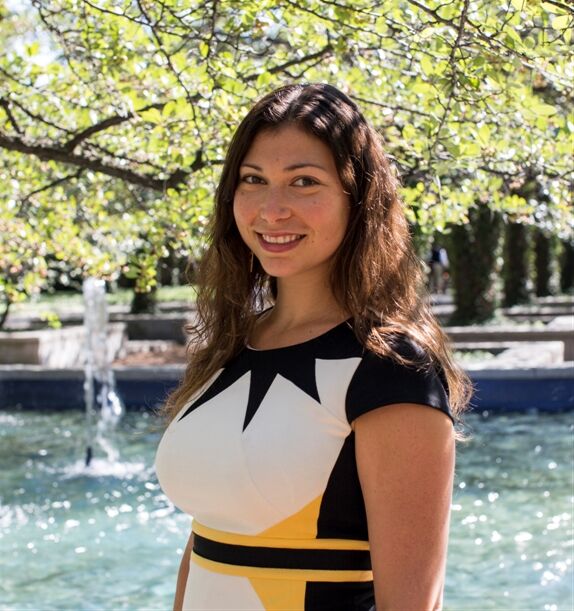
Connecting the Creative Community
by Jac Kuntz (MA 2016)
Six degrees of separation is a theory on the interconnectedness of the contemporary world. It postulates that everyone and everything is, at most, six introductions apart from anyone, anywhere in the world. You can be six degrees apart from anyone you may need or want to know, or you can skip five degrees and meet Jess Kaswiner.
Kaswiner is a 2010 alum of SAIC’s Master of Arts in Arts Education program. Now, only four years after graduation, she has already supported the work of eight nonprofit organizations—sharing her knowledge of cultural programming, community engagement, arts education, event management, and facilitating partnerships.

Most recently, she hosted Meet Your Maker, a Chicago Artists Month event that came out of an emerging leaders network and allows Chicago-area arts administrators to share resources and connect. Meet Your Maker was an alternative networking event that provided a creative and casual environment in which artists and arts administrator connected and shared ideas. All artists, educators, and arts administrators were welcome regardless of experience, background, or stage in their career. It laid the ground for new relationships and tapped into resources that will lead to interdisciplinary collaboration and means for innovation. A long list of special guests attended from nonprofit organizations and educators to performance artists, painters, and photographers in the Chicago area.
Kaswiner throws her full self into connecting communities to cultural enrichment, artists to opportunities, students to education, and organizations to an underserved population that have an untapped potential for creative drive and vision. “I like to think of myself as a connector,” she says. Her personal mission is to connect people with similar visions and help others see those perspectives.
She jumps right in upon meeting someone; as they begin to describe their background, their skills, their interests, you can see her mind reeling, sorting, retrieving, and linking information. Everyone she meets becomes a project, a friend, and a point of reference from which to learn.
After graduating from SAIC, she was hired by the Arts Alliance Illinois as a program manager. The Alliance is a nonprofit coalition that works for the arts in education, community involvement in the arts, creative research, and helping others advocate on behalf of the arts. She helped develop a website that would serve as an online platform and tool for art resources, educators, and professionals. She has since worked with two creative consulting companies hosting tutorials, assisting in strategic planning, and producing a series of podcasts titled Artists Mean Business, where she interviews arts entrepreneurs in Chicago for an audience of emerging arts leaders. She most recently brought her skills to the Mary and Leigh Block Museum at Northwestern University, aiding in a technology and system transition as well as assisting in programming and public relations. This fall she will be assisting the Community Affairs department at BMO Harris Bank.
Kaswiner is also deeply invested in EMBARC, a three-year engagement program for high school students that aims to “ensure equitable access to quality arts education for all youth.” The program started at Harper High (a school that statistically felt with greatest impact Chicago’s violent crime) and has since, expanded to nine schools. It stresses not only an education in the arts, but professional development, career planning, study skills, and experiential learning. Kaswiner has served as both an ambassador, as well as s a partner in its ongoing fundraising efforts. The program boasts a remarkable graduation rate of 97 percent.
She admits it is not always easy to turn awareness into action in underserved communities. “At first, because I had a different background from those in the community, I was an outsider; a fly on the wall,” she says. “At first you just need to listen…. You must recognize certain things, be humble, take a step back, and just listen.”
She notes that it is vital to make sure the voices of the community are part of the decision-making process and have a role in the project. She credits much of her social views and formation to the course she took under professor Craig Harshaw at SAIC called Social Theory for Artists and Cultural Workers. He stressed the importance of being in tune with the “subaltern” voices not heard because of their place in society and believed art has the expansive capacity to do just that. She was attracted SAIC’s Art Education program for its dedication to education in the community, using art as a platform for social change, offering an education that is potently applicable.
For Jess Kaswiner, awareness requires action. “Relationships built are only going to be successful if they are genuine, sustained, and deep,” she says. Kaswiner’s roles within the various organizations are fluid. She does more than drive a nonprofit organization forward, she establishes its roots in the neighborhood and branches out to connect the creative visionaries, educators, and supporters in the Chicago community at large.
